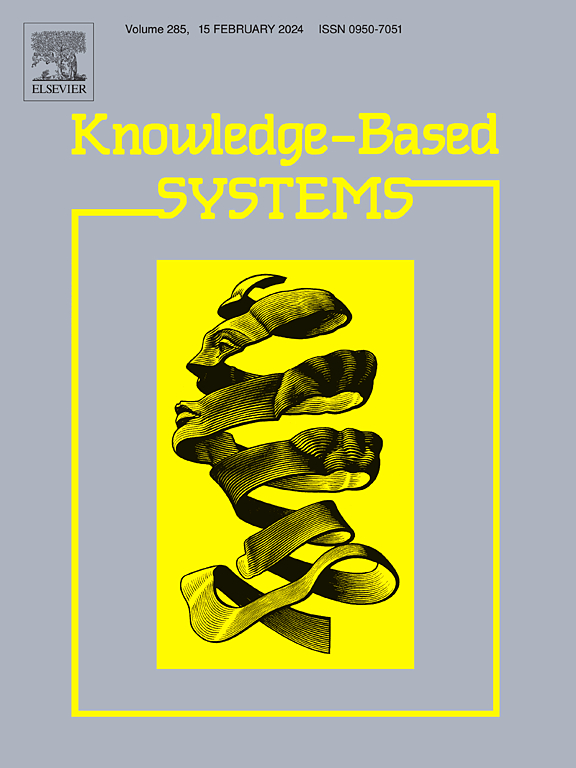基于全局-局部信息的监控视频异常检测方法
IF 7.6
1区 计算机科学
Q1 COMPUTER SCIENCE, ARTIFICIAL INTELLIGENCE
引用次数: 0
摘要
视频异常检测问题通常被视为弱监督方法下的多实例学习问题。虽然现有方法已显示出卓越的性能,但它们大多忽略了视频中全局信息与局部信息之间的联系。它们只对异常分数最高的正常或异常片段进行建模。因此,对小振幅异常事件或大振幅正常事件(如加速奔跑或偷窃)等难以区分的异常行为的归纳能力较差。为解决这一问题,我们提出了一种基于全局-局部的难以分类的异常检测网络。该网络利用视频片段的通道特征、时空特征和运动信息特征来捕捉视频中的全局和局部特征信息,从而区分异常和正常事件。其次,利用多任务学习方法设计了基于全局-局部的异常排序损失函数,从而增加了对难以区分样本的关注,减少了对易于分类样本的过度学习。此外,在损失函数的基础上,还提出了分数范围缩放策略,缩短了异常样本和正常样本之间的分类边界,使模型对不太明显的异常样本更加敏感。在光干扰、微小运动变化等难以分类的异常情况下,它表现出更高的鲁棒性。在 UCF-Crime 数据集上,AUC 达到 83.9%,比原始模型提高了 1.6%。这为异常检测领域提供了新思路。本文章由计算机程序翻译,如有差异,请以英文原文为准。
Anomaly detection method of surveillance video based on global-local information
The problem of detecting anomalies in videos is usually regarded as a Multi-Instance Learning problem under the weak supervisory approach. While existing methods have shown superior performance, most of them ignore the connection between global and local information in the video. They only model normal or abnormal segments with the highest anomaly score. As a result, the ability to generalize such hard-to-distinguish abnormal behaviors as small-amplitude abnormal events or large-amplitude normal events (e.g., accelerated running or stealing) is poor. To address this problem, a global-local based hard-to-categorize anomaly detection network is proposed. This network utilizes channel features, spatio-temporal features and motion information features of video clips to capture global and local feature information in videos to distinguish abnormal and normal events. Secondly, a global-local based anomaly ranking loss function is designed using a Multi-Task Learning approach, which increases the focus on hard-to-distinguish samples and reduces the over-learning of easy-to-categorize samples. In addition, based on the loss function, a score range scaling strategy is proposed, by which the classification boundary between anomalous and normal examples is shortened, making the model more sensitive to less obvious anomalous samples. It shows higher robustness on hard-to-categorize anomalous scenarios such as light interference, small motion changes, etc. On the UCF-Crime dataset, the AUC reaches 83.9 %, an increase of 1.6 % over the original model. It provides new ideas in the field of anomaly detection.
求助全文
通过发布文献求助,成功后即可免费获取论文全文。
去求助
来源期刊

Knowledge-Based Systems
工程技术-计算机:人工智能
CiteScore
14.80
自引率
12.50%
发文量
1245
审稿时长
7.8 months
期刊介绍:
Knowledge-Based Systems, an international and interdisciplinary journal in artificial intelligence, publishes original, innovative, and creative research results in the field. It focuses on knowledge-based and other artificial intelligence techniques-based systems. The journal aims to support human prediction and decision-making through data science and computation techniques, provide a balanced coverage of theory and practical study, and encourage the development and implementation of knowledge-based intelligence models, methods, systems, and software tools. Applications in business, government, education, engineering, and healthcare are emphasized.
 求助内容:
求助内容: 应助结果提醒方式:
应助结果提醒方式:


